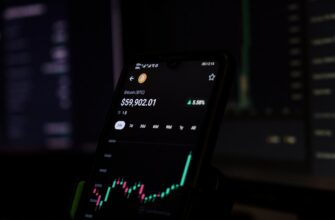What Are Crypto KPIs?
Crypto Key Performance Indicators (KPIs) are quantifiable metrics used to evaluate the health, growth, and efficiency of blockchain projects, cryptocurrencies, and decentralized applications. Unlike traditional financial metrics, crypto KPIs track unique on-chain activities, network participation, and tokenomics to provide actionable insights for investors, developers, and community managers.
Why Crypto KPIs Matter for Your Strategy
Ignoring crypto KPIs is like navigating a blockchain maze blindfolded. These metrics:
- Reveal real adoption beyond price speculation
- Identify growth opportunities through user behavior patterns
- Detect early risks like declining network activity
- Measure ROI for marketing and development efforts
- Enable data-driven decisions in volatile markets
Top 7 Crypto KPIs You Must Track
Prioritize these fundamental metrics for comprehensive analysis:
- Daily Active Addresses (DAA) – Unique wallets transacting daily, indicating genuine usage.
- Transaction Volume – Total value moved on-chain, reflecting network utility.
- Network Hash Rate – Computational power securing PoW blockchains (e.g., Bitcoin).
- Staking Participation Rate – Percentage of tokens locked in staking contracts.
- Token Velocity – How frequently tokens change hands, signaling holder confidence.
- TVL (Total Value Locked) – Capital deposited in DeFi protocols, measuring ecosystem trust.
- Burn Rate – Tokens permanently removed from circulation, affecting scarcity.
How to Measure Crypto KPIs Effectively
Implement a 4-step framework for KPI success:
- Define Objectives: Align metrics with goals (e.g., user growth vs. token stability).
- Source Reliable Data: Use blockchain explorers like Etherscan and DappRadar for on-chain analytics.
- Establish Baselines: Compare metrics against historical averages and competitors.
- Automate Tracking: Set up dashboards via tools like Glassnode or CoinMetrics.
Essential Tools for Crypto KPI Monitoring
- Chain Analysis Suites: Nansen (wallet labeling), Dune Analytics (custom dashboards)
- Market Intelligence: Messari (institutional-grade reports), CoinGecko (exchange metrics)
- Protocol-Specific Trackers: DeFi Llama (DeFi TVL), Etherscan (Ethereum gas fees)
Best Practices for Crypto KPI Implementation
- Combine on-chain and off-chain data (social sentiment, CEX volumes)
- Focus on 3-5 core KPIs instead of vanity metrics
- Adjust for market cycles – bear markets require different benchmarks
- Validate data across multiple sources to avoid manipulation
FAQ: Crypto KPI Essentials
Q: How often should I check crypto KPIs?
A: Daily for active trading, weekly for long-term investors, and real-time during market volatility.
Q: Can KPIs predict crypto prices?
A: Not directly, but metrics like exchange outflows (indicating accumulation) often precede rallies.
Q: What’s the most overlooked crypto KPI?
A: Realized Price – the average acquisition cost of all coins, indicating market breakeven points.
Q: Are KPIs relevant for NFTs?
A: Absolutely! Track floor price stability, unique holders, and secondary sales volume.








